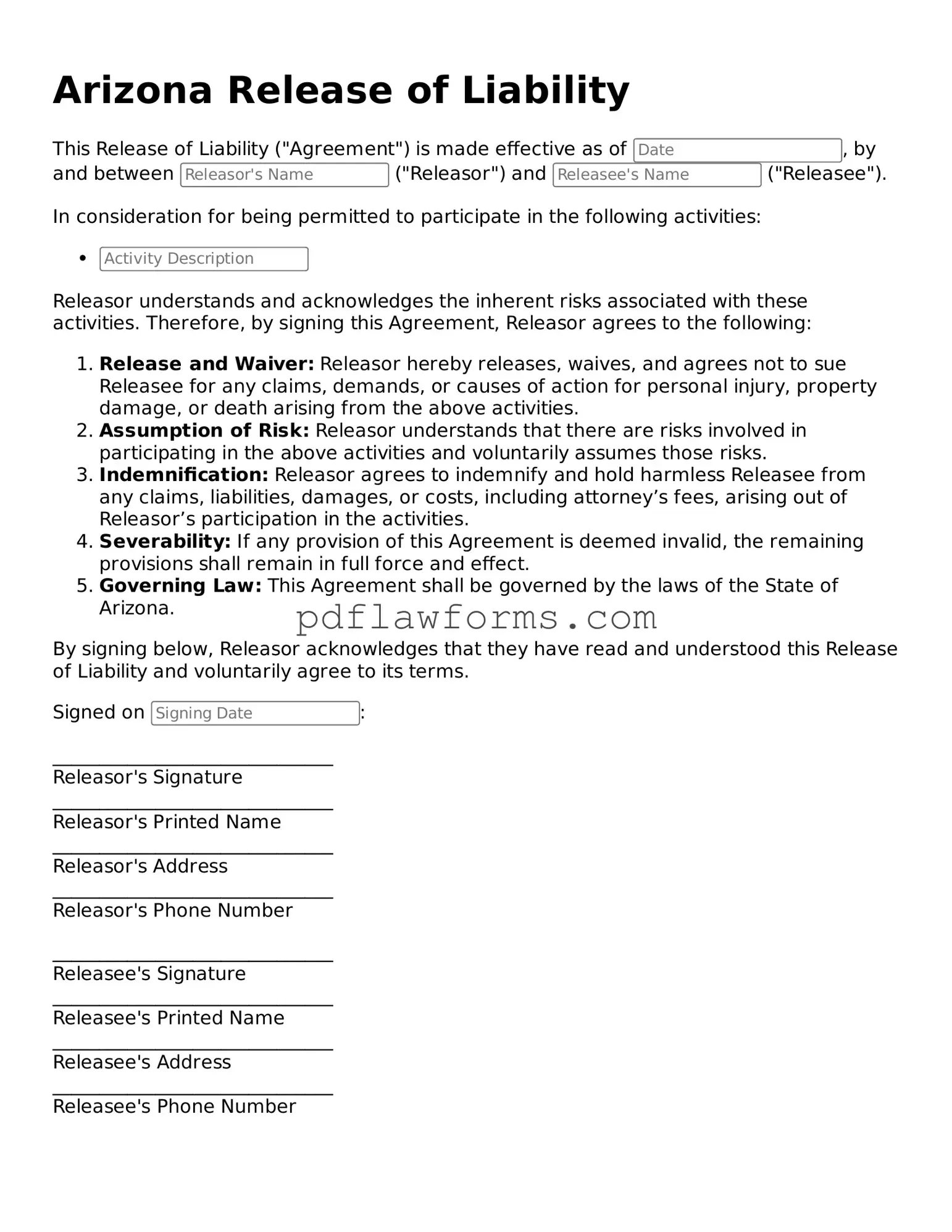When completing the Arizona Release of Liability form, individuals often make several common mistakes that can lead to misunderstandings or legal issues. One frequent error is failing to read the entire document thoroughly before signing. This can result in overlooking important clauses or conditions that could affect their rights.
Another common mistake is not providing accurate personal information. Incorrect names, addresses, or contact details can lead to complications in the event of a claim. Ensuring that all information is correct and current is crucial for the validity of the form.
People sometimes neglect to date the form properly. A missing or incorrect date can raise questions about when the release was executed, potentially impacting its enforceability. Always include the date to avoid such issues.
Some individuals do not understand the scope of the release. They may inadvertently release liability for actions or negligence that they did not intend to cover. It is essential to clearly understand what risks are being waived before signing.
Another mistake is failing to include all necessary signatures. If multiple parties are involved, each individual must sign the form. Missing signatures can render the document incomplete and unenforceable.
Individuals may also forget to check the box or sign in the designated areas. This can lead to confusion about whether the release is valid. Review the form carefully to ensure all required sections are completed.
In some cases, people do not seek legal advice before signing the release. This can be a significant oversight, especially if the individual is unsure about the implications of the document. Consulting with a legal professional can provide clarity and guidance.
Another mistake involves not keeping a copy of the signed form. Without a copy, individuals may find it challenging to prove the terms of the release later. Always retain a copy for personal records.
Some individuals fail to understand the importance of witnesses or notarization, if required. Not having a witness or a notarized signature can lead to questions about the authenticity of the document.
Lastly, people often ignore the expiration date of the release. Some releases may have a time limit on their enforceability. Be aware of any time constraints associated with the release to ensure it remains valid.
